By T. Johnston
In case you missed the first two parts:
Part 1 Evaluation of both the site and the structure.
Part 2 Rough Assessment of the logs Log Stripping and Final Assessment of the logs
Now on to Part 3.
In our last issue we discussed Rough Assessment of the logs Log Stripping and Final Assessment of the logs.
In this issue we’ll cover removing & replacing logs from a wall and repairing logs.
Removing & Replacing Logs
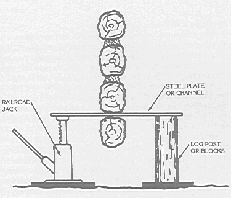
From our assessments done previously many of the logs in this structure needed to be replaced. Before beginning this phase we determined the fastening system between the rounds of logs.
Generally log rounds are secured together with wood dowels spikes lags Oly Log or Log Hog type screws or bolted from foundation to roof with all-thread. Because of their notching styles many handcrafted log homes will not use metal fasteners from one round to the next but may use all thread only from the foundation into the first few rounds. To remove logs from a wall these fasteners can be severed using a reciprocating saw.
The fundamentals to removing logs from a wall are: separate the logs support the remaining logs remove the damaged log (or portion of) insert a new log scribe and fit the new log settle the wall. Of course every situation is unique and one method of jacking or separating logs that works in one situation will not always work in the next. Use caution cushion the surrounding logs with wood or other material to avoid damaging them and be patient. Realize that it may be impossible to remove a particular log and replace it without severely damaging the rest of the structure so restoration of that log may be the only option.
Sill logs (bottom round of log wall and below windows) need replacing most often. Most log walls are notched so it may be necessary to segment the log to be removed. Sometimes just the log crowns (part that extends beyond the notch) need replacing and the rest of the log is fine. The diagrams below show one method on how just the crown ends can be removed and replaced. Fiberglass rods can be used to strengthen these areas.
Remember that any log end that extends beyond the roof line invites rot.
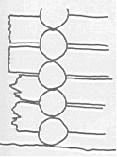
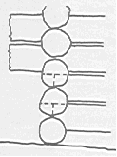
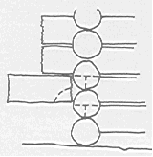
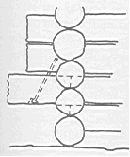
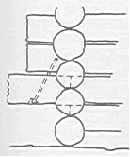
Repairing Logs
Many logs could be salvaged because they either had small areas of rot or were structurally stable but had a few problem areas that could pose a problem in years to come. Both could be treated without removing the logs.
First we decided in many areas to apply borates prior to application of epoxy resins. Borates tend to penetrate deeper than the Liquid Wood type epoxy. Borates are water soluble inorganic borate salt with insecticidal and fungicidal properties that are effective against many wood destroying organisms. We felt this gave some additional protection to the log “behind” the epoxy patch to protect against any potential/residual moisture or insect proplems.
Next two Epoxy type products were used: Liquid Wood and Wood Epox .
For areas that were spongy yet salvageable we drilled small holes just larger than the tip of a syringe (available from an animal feed store or veterinarian) into the wood and injected Liquid Wood into these areas. The solution surrounds the wood cells and “petrifies” them. This approach can also be used if you are filling a hollow pocket in a log. For deeper penetration in an area where the structural capabilities of the epoxy are not as critical you can dilute the epoxy with acetone (up to about 10% acetone).
For repairing areas of wood that have cavities because the wood has rotted away Wood Epox would be the answer. Liquid Wood can be used as a primer but the Wood Epox can be easily shaped to match the log. Because Wood Epox dries white getting it to match the rest of your log when you are using a semi-transparent stain/finish can be a little tricky. You can experiment and trace some of the grain texture to match your log with a nail or awl into the uncured material and then paint the Wood Epox area a light tan color when it is fully dry before you apply the stain. There are also pigments available to add to the Wood Epox. Doing a small test patch first is recommended. Adding a bit of “sawdust” from your work will help to texture and color the patch. Remember that any visible patch will rarely “take” a finish in the same manner as the log thus you’ll likely have a spot that stands out a bit from the log unless some of the steps mention here are taken.
We cheered when the last of the replacement logs were finished on this 1903 house and I’d like to think the house was happy to see itself ship-shape again. After staining and chinking it is beautiful once more.


